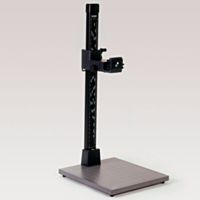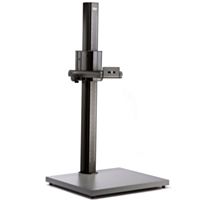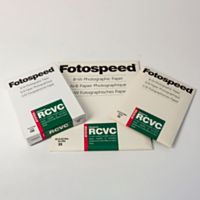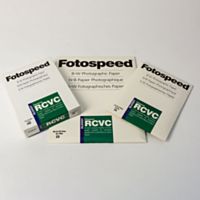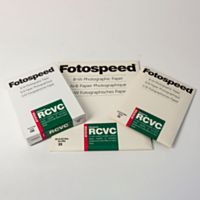Why you should shoot landscape photography in bad weather
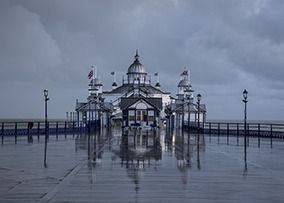
Tony Worobiec is a Fellow of the Royal Photographic Society and one of our Fotospeed photographers. He has won awards for photography both in the UK and internationally, and has authored 16 books. In this blog post, adapted from his book “Photographing Landscape Whatever the weather”, Tony discusses the benefits of shooting landscape photography irrespective of the weather and challenges our assumptions of what is a “landscape”.
You can find out more about Tony here.
In the minds of some, a great "landscape" needs to conform to some ideal paradigm – a sun-kissed Caribbean beach, bathed in rich sunlight; or a snow-capped Alpine shot with a cluster of conifers in the foreground. Most are, however, unaware that the moment we step outside, we are entering "landscape". Moreover, most people hardly ever consider the possibility of shooting landscape photography in bad weather. In this blog, however, I aim to illustrate the ways in which the weather is the defining factor of a landscape photograph – regardless of rain or shine.
Realise that everywhere is a landscape
The first thing we need to appreciate is that landscape is an extremely wide-ranging genre; while of course there will always be a place for the bucolic scene, we need to appreciate that the "industrial landscape", the "coastal landscape" and of course the "urban landscape" are also worthy subjects. It helps to understand that every location will have its golden moment and it is simply a matter of being in the right place at the right time. Moreover, photographers can often be quite disappointed when visiting a photographic "honey pot", as it does not appear quite as they had expected. It is only when we understand that the defining quality of any landscape is the weather, as it governs the two most important features (notably lighting and mood), are we truly able to master landscape photography.
Choosing your location based on the weather

"After the storm, near Havre, Montana." Many photographers are discouraged by rain, but the lighting we see, often after a heavy storm, can be spectacularly beautiful. When this shot was taken, the area had been afflicted by passing tornadoes, although shortly afterwards the sky was filled with a magnificent display of mammatus clouds. The old adage "there is a silver lining under every dark cloud" certainly applied.
While we have some control over where we visit, we have no control over the weather. I am often saddened when I listen to some photographers complain that the weather was not kind to them, and that they’d rather not undertake landscape photography in bad weather. My advice is, rather than determine where you wish to photograph on any specific day, it is often far better to assess the weather, then choose a location that best suits. For example, while strong sunshine might benefit a field of sunflowers, it will prove less advantageous when trying to capture that lovely silky effect one can achieve when photographing waterfalls using a slow exposure. Some urban or industrial landscapes convey a sense of pathos that is more suitably photographed under dark or thunderous skies – proving that you can shoot meaningful landscape photography in bad weather.
Some of the most interesting examples of photography feature the same landscape taken on different days, with each shot revealing the unique climatic characteristics of that day. The great American photographer Joel Meyerowitz is a personal hero of mine, and in one of his publications, "Bay and Sky" he focused on a single stretch of shore and photographed it repeatedly, capturing the subtle nuances of the changing weather day by day. What Meyerowitz understood with this remarkable project, was that it is not just the location, but the weather that truly defines the landscape.
Editing can help – but understanding the mood of a landscape helps more

"Bluewater Restaurant". This wrecked and abandoned sign, photographed on old Route 66, conveys a sense of pathos and sadness consistent with the dark and threatening sky. While this is a subject that would have been just as easily photographed under sunny skies, that all important sense of mood would have been lost.
While I have made every attempt to keep all my illustrations free of manipulation, there are occasions when a little help from editing software can help. Although DSLR cameras have greatly improved in recent years, knowing how to retrieve "lost" shadow and highlight detail is invaluable. From a technical standpoint, the essence of good landscape photography is balancing out the light and dark areas. A knowledge of how certain filters work also helps. But the single most important skill is to develop a sensitivity to how the prevailing weather affects the mood of the landscape and how best to capture it.
Choosing your paper
Choosing your paper is an essential element for consideration as, much like the weather, different papers will highlight different aspects of your photograph and create different moods. I would recommend finding papers that you can rely on to bring out those elements that you want to make prominent. In my case, I want to bring out the subtleties of colour in my landscapes. Many fellow photographers have commented that my colour images reveal a very subdued colour palette, which perfectly chimes with the grey landscapes I particularly enjoy taking. It is perhaps no coincidence that for most of my career I was a monochrome specialist, with a long tradition of working in the darkroom. Some of those analogue papers were absolute classics, however they have met their match with Fotospeed's Platinum Baryta and Platinum Matt, which I regularly use for my landscapes. Aside from being archival, both papers have that wonderful capacity to draw out the very subtle, nuanced colours that characterise weather. Moreover, where I want the greys to appear absolutely neutral, I can always rely on these two absolutely fabulous "modern classics".
Why is it important to understand this?
It’s not correct to think of landscape photography as only for those who have the means to travel, or have the best equipment, or never find themselves out trying to shoot landscape photography in bad weather. Landscape photography is a particularly accessible genre of photography. By recognising that landscape can be taken irrespective of the weather, and that landscape exists outside your back door, it becomes available to everyone. There is no need to buy the most expensive camera; in fact, very impressive landscape photographs can be taken with quite modest equipment. What’s more important than your equipment, or the weather, is to develop an open-minded approach to a potential that exists on a daily basis.

"Swanage Pier in heavy Rain". It is all too easy to convince yourself that there is no point in venturing out when it raining, but to do so is to miss a wonderful opportunity. The mood you are able capture in these conditions just about surpasses all others. Obviously you do need to take certain precautions to ensure that water doesn't get into your camera, but these can be very easily overcome. In this example, I had already anticipated the aperture and ISO rating required prior to walking out onto the pier and only took my camera out of my bag at the last moment.
The purpose of this blog is to encourage you to photograph landscape, irrespective of the prevailing weather. Even, perhaps, to encourage you to take landscape photography in bad weather. While we are all quite comfortable shooting landscape when the weather conditions are benign, we should also be aware of the excellent opportunities that exist when the weather proves challenging. Whether it is sunny or raining, calm or blowing a gale, freezing cold or baking hot – each of these weather conditions will help to define the landscape. It's a matter of learning how to respond. So when you wake up in the morning and assess the weather for the day, view it as an opportunity to take meaningful and original landscapes.
If you would like to stay on top of all the latest information from Fotospeed don't forget to sign up to our Newsletter.


